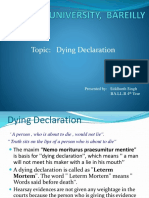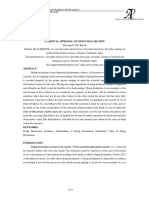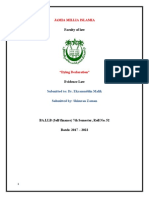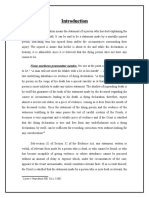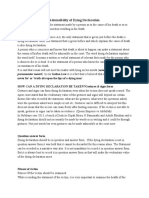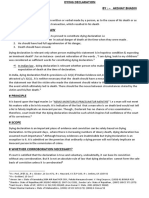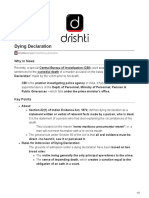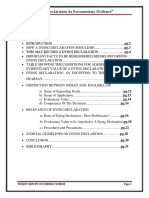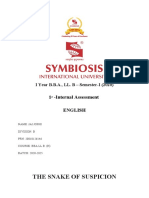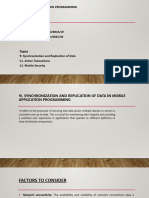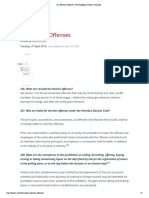0% found this document useful (0 votes)
36 views8 pagesAssignment Dying Declaration
The document discusses the concept of dying declarations in legal contexts, emphasizing their admissibility under Section 32(1) of the Indian Evidence Act. It outlines the conditions for recording such declarations, the forms they can take, and the importance of ensuring the declarant's mental fitness at the time of the statement. Relevant case law is cited to illustrate the principles governing the reliability and acceptance of dying declarations in court.
Uploaded by
chirutha8nairCopyright
© © All Rights Reserved
We take content rights seriously. If you suspect this is your content, claim it here.
Available Formats
Download as PDF, TXT or read online on Scribd
0% found this document useful (0 votes)
36 views8 pagesAssignment Dying Declaration
The document discusses the concept of dying declarations in legal contexts, emphasizing their admissibility under Section 32(1) of the Indian Evidence Act. It outlines the conditions for recording such declarations, the forms they can take, and the importance of ensuring the declarant's mental fitness at the time of the statement. Relevant case law is cited to illustrate the principles governing the reliability and acceptance of dying declarations in court.
Uploaded by
chirutha8nairCopyright
© © All Rights Reserved
We take content rights seriously. If you suspect this is your content, claim it here.
Available Formats
Download as PDF, TXT or read online on Scribd
/ 8

